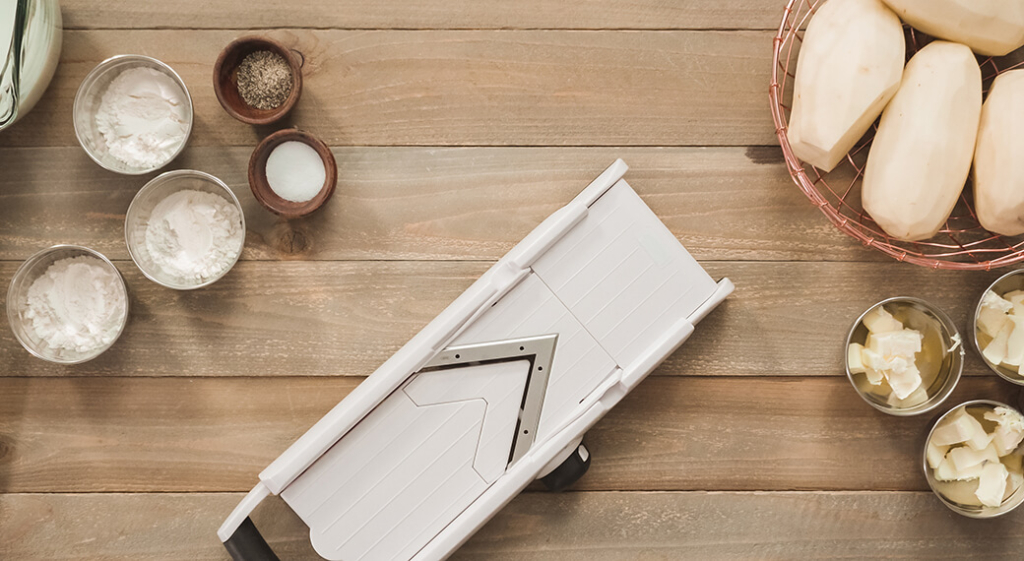Curious about incorporating a mandoline into your prep kitchen? We explain their applications, how they stack up against knives, best practices, and talk about three models for a more in-depth look into the mandoline product market.
Mandolines 101
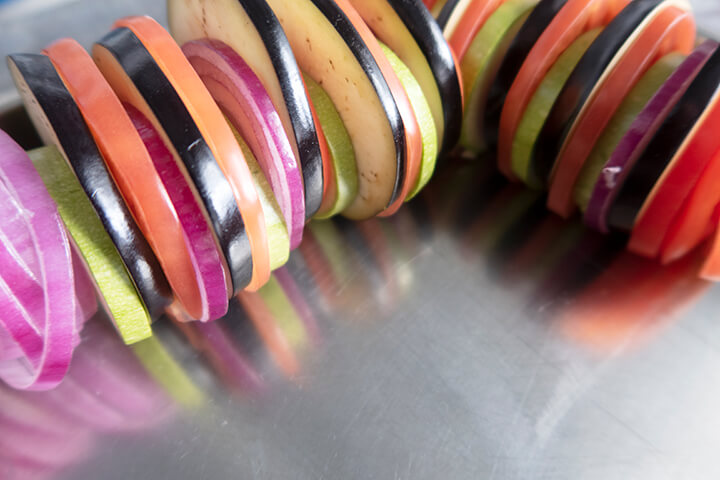
A mandoline is a versatile kitchen tool used to slice, shred, and julienne with extreme precision and uniformity. When using a speedy and efficient mandoline, chefs have precision control over the thickness and shape of their cuts.
Mandolines typically consist of a flat base with a sharp blade that can be adjusted to various thicknesses. The food is held securely against a blade guard or pusher, ensuring precise and uniform cuts. You’ll find them in different styles and sizes, including handheld models and larger, more stable ones with adjustable platforms.
Because the blades are so sharp, mandolines often include a hand guard or food pushers, and non-slip parts to help prevent cuts.
The Mandoline–Guillotine Connection
One popular origin story about mandolines asserts that they were invented by Dr. Joseph-Ignace Guillotin, the French physician associated with the invention of the guillotine. However, this is likely an urban legend.
Research suggests that slicer devices with a sliding carriage and blade existed in Europe as early as the 17th century, primarily used for slicing roots and vegetables. The mandoline as we know it today is believed to have emerged in France sometime in the 19th century, finding its place in professional kitchens.
Effortless Applications
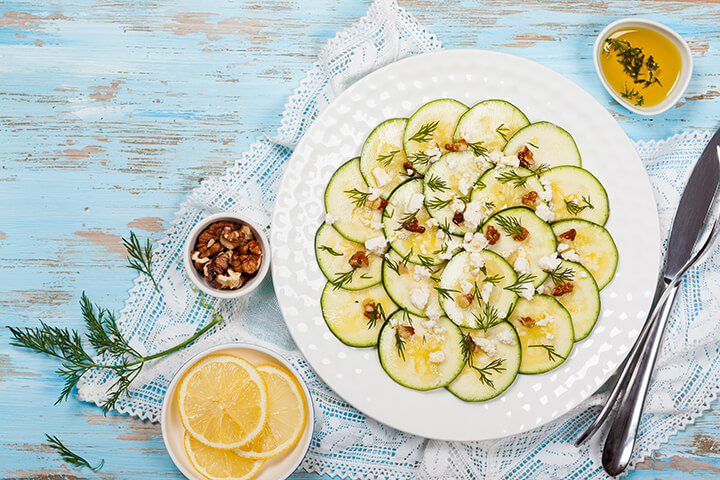
With a mandoline, it’s easy to produce delicate and uniform cuts of cheese, fruit, vegetables, seafood, and more. Here are some specific applications:
- Julienne: Creating thin, uniform strips of vegetables for salads, stir-fries, and garnishes.
- Brunoise: Cutting vegetables into tiny cubes for classic French dishes like mirepoix and ratatouille.
- Chiffonade: Shredding leafy herbs like basil and parsley into fine ribbons for sauces and garnishes.
- Fine Slices: Producing paper-thin slices of vegetables for carpaccio, salads, potatoes dauphinoise, and wafer-thin garnishes.
Mandolines vs. Knives
Chefs love their knives, as they should. Mandolines, however, do present significant benefits for busy prep work. For starters, they guarantee uniform slice thickness across large quantities of food, saving time and ensuring consistent cooking throughout a dish.
Prep work necessitates speed in a commercial kitchen and slicing large volumes of food becomes a breeze with a mandoline. Using one in lieu of a knife significantly accelerates prep time. Additionally, when thinking about convenience, the variety of blade attachments this tool accommodates allows for a wider range of cuts compared to a single knife.
Best Practices While Operating a Mandoline Slicer
Despite its numerous advantages, this tool is not without its challenges. The biggest hurdle for new users is undoubtedly safety. Their razor-sharp blades demand respect and proper technique to avoid injury. Mandoline injuries will happen to careless users, so, follow these best practices:
- Regularly sharpen or replace blades to ensure clean, efficient cuts that minimize the risk of the blade slipping.
- Always use the safety guard or food pusher to keep your fingers a safe distance from the blade.
- Begin with the thickest setting on the mandoline and gradually adjust to thinner slices as you gain confidence and control.
- Don’t overload the mandoline with too much food at once. Process smaller pieces for better control and safety.
Three Examples of Popular Mandolines
Here are three of our favorite models that are incredibly useful in commercial kitchens.
Little Beni Mandoline
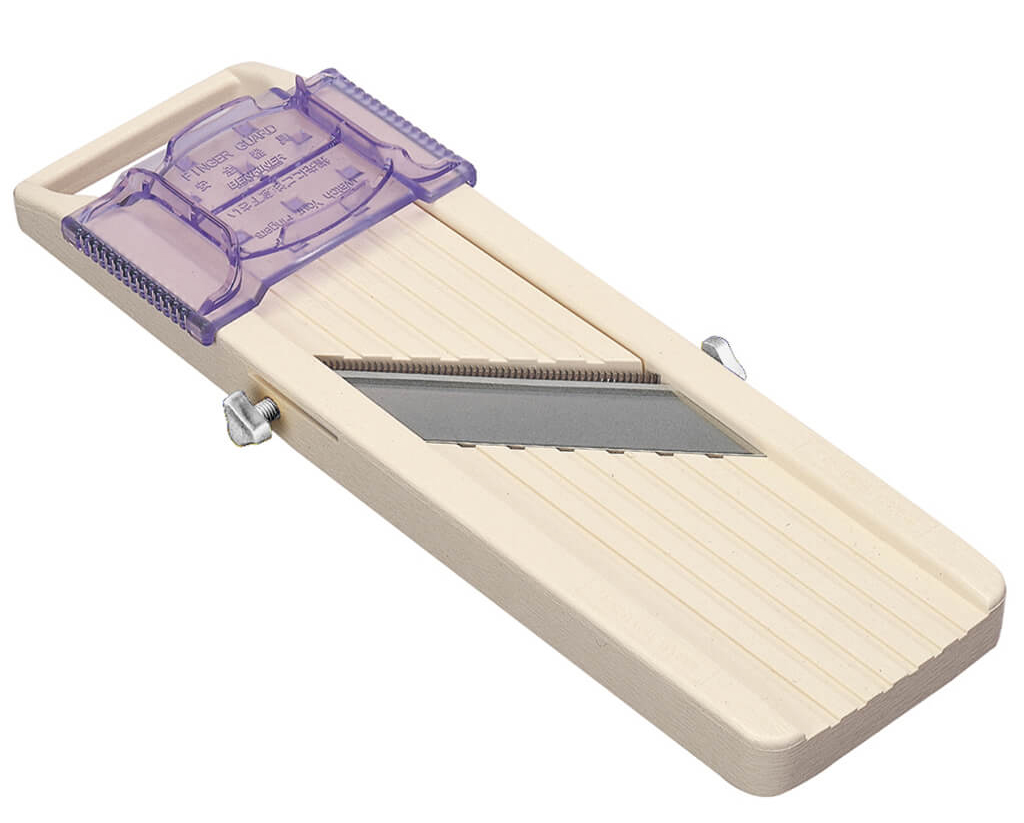
The Little Beni Mandoline has a classic design that chefs favor for its compact form, high-quality design, and hygienic frame that is easy to clean by hand or in a dishwasher.
This simple and effective tool was made in Japan. It was made with high standards for durability, performance, and hygiene to meet the needs of your professional kitchen.
Stainless Steel Safe Hands Mandoline
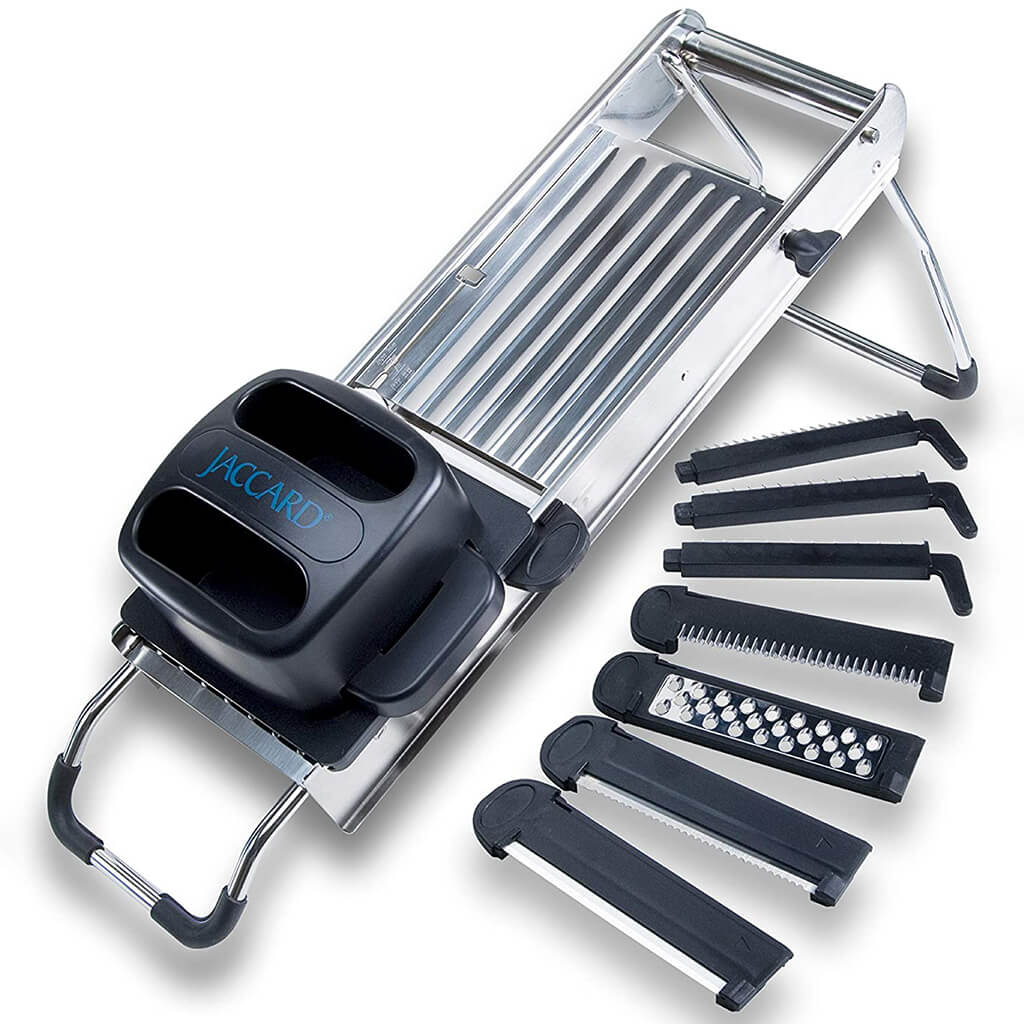
Keep your prep cooks’ hands and fingers away from razor-sharp slicing blades with the SafeHands Mandoline.
Its patented Safe Hands food holder adds a layer of protection when using the seven interchangeable stainless steel blades. This versatile tool comes with slip resistant legs that fold flat and a convenient storage box.
Cuisipro Handheld Mandoline
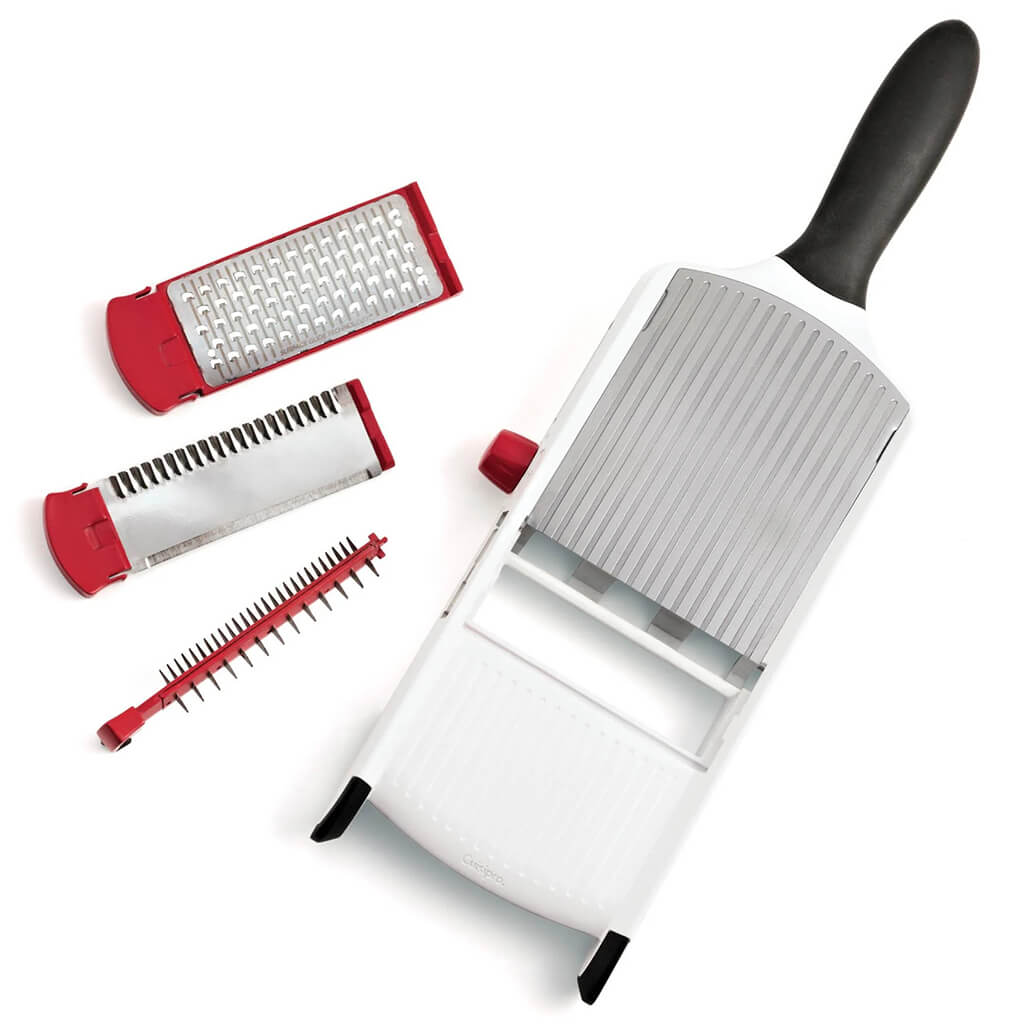
The Cuisipro Mandoline features Surface Glide Technology with all the features of a full-sized mandoline in one compact body.
You have options with six adjustable thickness settings and three interchangeable blades for slicing, crinkle and waffle cutting, dicing, julienning, and grating. Additionally, the ease of non-slip soft coated handles makes prep work fly by.
Food Prep Efficiency
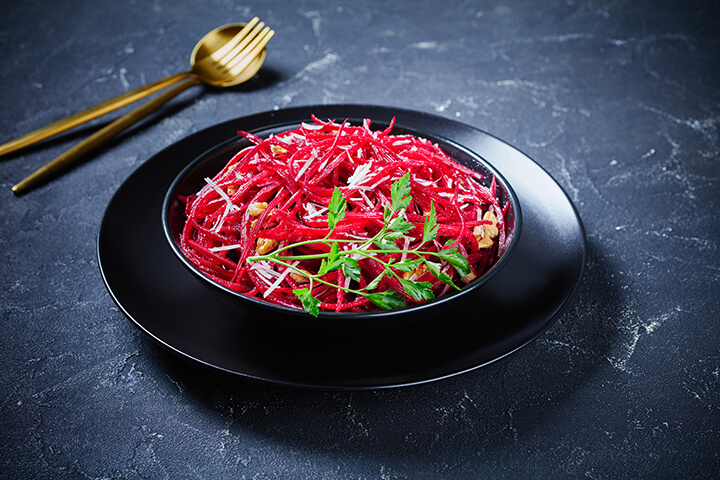
Ready to incorporate a mandoline into your prep kitchen? As a commercial kitchen tool, they offer chefs a convenient and efficient way to slice, shred, and julienne ingredients with speed and precision, faster than your favorite knife.

